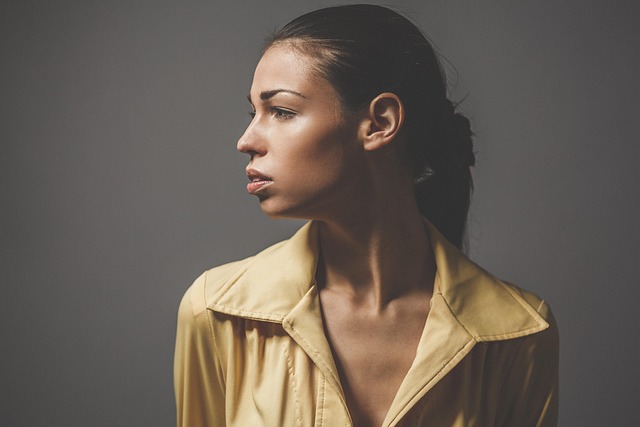Ella Mora isn’t a household name yet, but inside galleries and sculpture symposiums, her presence is loud and growing. She’s part of a new wave of artists pushing against clean lines and digital polish. Instead, her work leans into texture, fracture, and a kind of unpolished balance—what critics politely call “organic form.”
What sets Mora apart is restraint. Her sculptures don’t scream for attention. They invite touch, study, and quiet discomfort. She works mostly in reclaimed materials—stone, pulp, metal—and lets their imperfections steer her process. While others are going high-tech, she strips things back. No flashy installations. Just raw form with weight, space, and quiet rebellion.
In the current art scene flooded with algorithmic aesthetics, Mora’s work holds ground for something slower and more human. Organic form here doesn’t mean soft curves or plant shapes. It means structure that breathes, materials that shift, and pieces that evolve by existing. In a rush-to-finish world, that’s rare.
From Audience to Community
The Creative Process: Built on Touch and Improvisation
In the studio, each piece emerges not from rigid planning but through constant interaction. Artists often begin with a loose idea, but the final form is shaped by hands-on engagement, spontaneity, and the willingness to follow where the material leads.
- Pieces evolve as the artist interacts with the medium
- Emphasis on physical touch, intuition, and real-time decisions
- No two outcomes are ever exactly alike
This approach invites accidents and discoveries to become part of the final expression, offering a sense of authenticity that polished perfection often lacks.
Defying Traditional Forms
Rather than following conventional expectations, many creators are now stepping outside the standard forms of symmetry and flawlessness. The charm lies in what traditional molds would define as mistakes.
- Asymmetry becomes intentional and valued
- Imperfections are embraced as essential story elements
- Texture adds character and emotional weight
This rejection of tradition isn’t rebellion for its own sake. It’s a conscious choice to value what feels real over what simply looks correct.
The Emotional Impact of Process
Creation is not just about what is made but how it’s made. Viewers and collectors increasingly connect with the feelings embedded in a piece—whether it’s the energy of a bold brushstroke or the vulnerability in an unpolished edge.
- The process reflects mood, mindset, and emotion
- Materials and marks carry personal significance
- Finished work becomes a dialogue between artist and audience
By opening up the process, artists are no longer isolated figures producing finished goods—they’re active storytellers shaping a shared emotional experience.
Natural materials are making a strong return, but not in the way you’d expect. Creators are shaping clay, bronze, and reclaimed wood or stone into forms that aren’t quite sculptures of trees, bodies, or landscapes—but suggest all three. These pieces live in the friction between the organic and the abstract, where texture carries more meaning than detail.
Biology shows up in strange ways—veins, folds, and cellular patterns echoed in the curves of a bowl or the contour of a carved slab. Topography plays a part too. Surfaces look eroded, wind-worn, as if they’ve existed longer than the artist. And then there’s the human gesture: fingerprints left in clay, tool marks left unpolished, showing that a hand was there, but never telling you exactly what it meant.
This kind of minimalism isn’t about simplicity. It’s about restraint, intention, and leaving room for the viewer’s imagination. That’s why these works feel timeless. They’re not trying to shout. They just stand there, quietly alive.
They don’t wait for permission. These artists step outside the white cube and bring the audience with them. Their work breaks up the clean, quiet sterility of traditional gallery settings with raw, physical, and often unpredictable experiences. The result? Walls don’t just hang art—they become stage, shelter, or soundboard.
This approach hasn’t gone unnoticed. Their installations and performances have moved from underground spots to major exhibitions and permanent collections. Big-name curators are giving them space. Institutions that once only traded in paint and canvas are now making room for sweat, sound, ritual, and subversion.
Collectors and critics are responding to the sensory charge. These pieces are loud without shouting, emotional without being sentimental. They ask for more than a glance—they ask you to stay, to feel something, to let it sink in.
What starts as disruption becomes influence. A younger set of artists is not just watching—they’re picking up the thread and pulling it further. Newcomers in the installation and performance space are citing these creators as direct inspiration. The legacy is already in motion, and it’s not playing by anyone else’s rules.
In an era dominated by high-gloss filters, aggressive branding, and fast-scrolling feeds, these sculptures feel like a deliberate pause. Their matte finishes, ambiguous forms, and organic imperfections work against the speed and polish of digital culture. Where everything online aims to be frictionless and optimized for impact, these pieces slow the viewer down. They ask for attention in a different way—not through spectacle, but through weight, texture, and silence.
The artist isn’t chasing trends or making loud statements. Instead, their work fits into a longer, quieter tradition. There are echoes of mid-century minimalism here, with its focus on form stripped of distraction. But there’s also a biomorphic softness that nods to natural evolutions and physical bodies. It’s both restraint and intuition—structured minimalism meeting the unpredictable shapes of life.
To read more on how contemporary artists are reclaiming space for this kind of work, check out Inside the Studio of a Minimalist Contemporary Artist.
The artist isn’t just shaping objects. They’re shifting our relationship with physical space itself. What was once an arm’s-length interaction with sculpture or installation has turned into something more personal, more grounded. Viewers walk around, press up close, feel the pull of gravity in materials and design. This kind of presence isn’t accidental—it’s built on intention.
In a world moving faster by the scroll, there’s something radical about slowing down. Taking time to notice weight, texture, spatial tension. It asks more from us than a tap or swipe. And that’s the point. Tactile experience sticks in ways digital can’t copy. It’s messy. Human. Real.
As our screens grow brighter and our patience thinner, the physical world suddenly feels like a new frontier. Contemporary art is catching on. When we’re burned out on the endless feed, touching something real—and being changed by it—starts to feel like the future.




